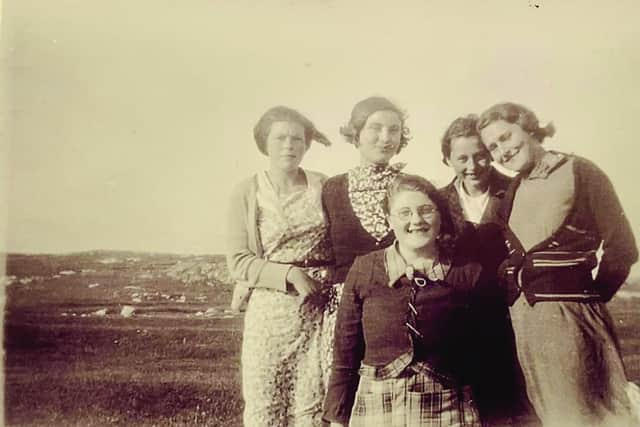Book review: Women of the Hebrides, by Joni Buchanan
Joni Buchanan’s study of Hebridean women’s lives in the 20th century is a strikingly elegant and substantial volume. Beautifully produced by Stornoway publishers Acair, it is lavishly illustrated both with historic photographs of island life, and with photographic portraits of the women whose interviews with the author form the backbone of the book; and it is no surprise to learn that this fine volume has been more than 20 years in the making.
Dr Buchanan’s earliest interviews therefore feature women born before the First World War, including the legendary recorder of island culture, Margaret Fay Shaw of Canna, whom Buchanan interviewed in 2002, when she was 99 years old; and Buchanan also makes use of earlier archive material, from BBC Radio nan Gaidheal and other sources, to include some voices of women born in the 19th century.
Advertisement
Hide AdAs a result, her book – with most of the interviews appearing in both Gaelic and English – covers an extraordinary sweep of history witnessed at first hand, from times when, for many, the island way of life continued much as it had for centuries, through the massive social upheavals of two world wars, to the very different world – not least for women – of the late 20th century.
Buchanan’s purpose is to challenge certain familiar historical stereotypes of island women as silent, powerless and joyless figures, ground down by severely patriarchal religious and social attitudes, and lacking any agency in their lives. As she says in the first line of her foreword, she was raised “among women of enormous strength and character”; and after the book’s earlier chapters – dealing with women as culture-bearers, singers and musicians, as workers at the herring-gutting and tweed-making, and as crofters and makers of everything from preserved foods to hard-wearing knitwear, in a culture where every resource had to be put to good use – it comes as no surprise to see the energy and success with which the women of the Hebrides began to seize the new opportunities of the 20th century, often training as nurses or teachers, or heading for new lives in North America.
Given the age of many of Buchanan’s interviewees, it’s perhaps not surprising that the book contains large sections on the trauma and opportunity of the two world wars, which saw Hebridean women serve as nurses and later as servicewomen all over the world. The strength and steadfastness of Hebridean women in war was often noted; and of course, it was tested to the limit by the shocking death toll of island men in the First World War, which struck what many saw as a final blow to the islands’ old way of life.
In the end, as the book moves through final chapters on the emigrant experience in Canada and Patagonia, and on the lives of missionaries and traveller women, it seems almost as though Buchanan is striving too hard to be comprehensive, in her celebration of the huge diversity of Hebridean women’s experience and influence; the book has no conclusion, and simply presses the pause button after its final interview.
As a result, and despite its handsome presentation, Buchanan’s study sometimes seems almost more like raw data than a finished book; there is surely more to be written, for example, about what it means – in a 21st century desperately seeking more sustainable ways of life – to have among us people who can still clearly remember the last years of a true subsistence economy in these islands, and the richness of the cultural and social life supported by it.


The huge value of Buchanan’s book, though, lies precisely in its power to inspire further study, and to provoke more thought on what we can learn from the experience of the strong, remarkable and beautiful women honoured in its pages. In that sense, it is a truly vital piece of Scottish history; and one packed with life, in all its joy and sorrow, its sheer hard work, and its many paths to fulfilment, all faithfully chronicled here.
Women of the Hebrides, by Joni Buchanan, Acair Books, £26